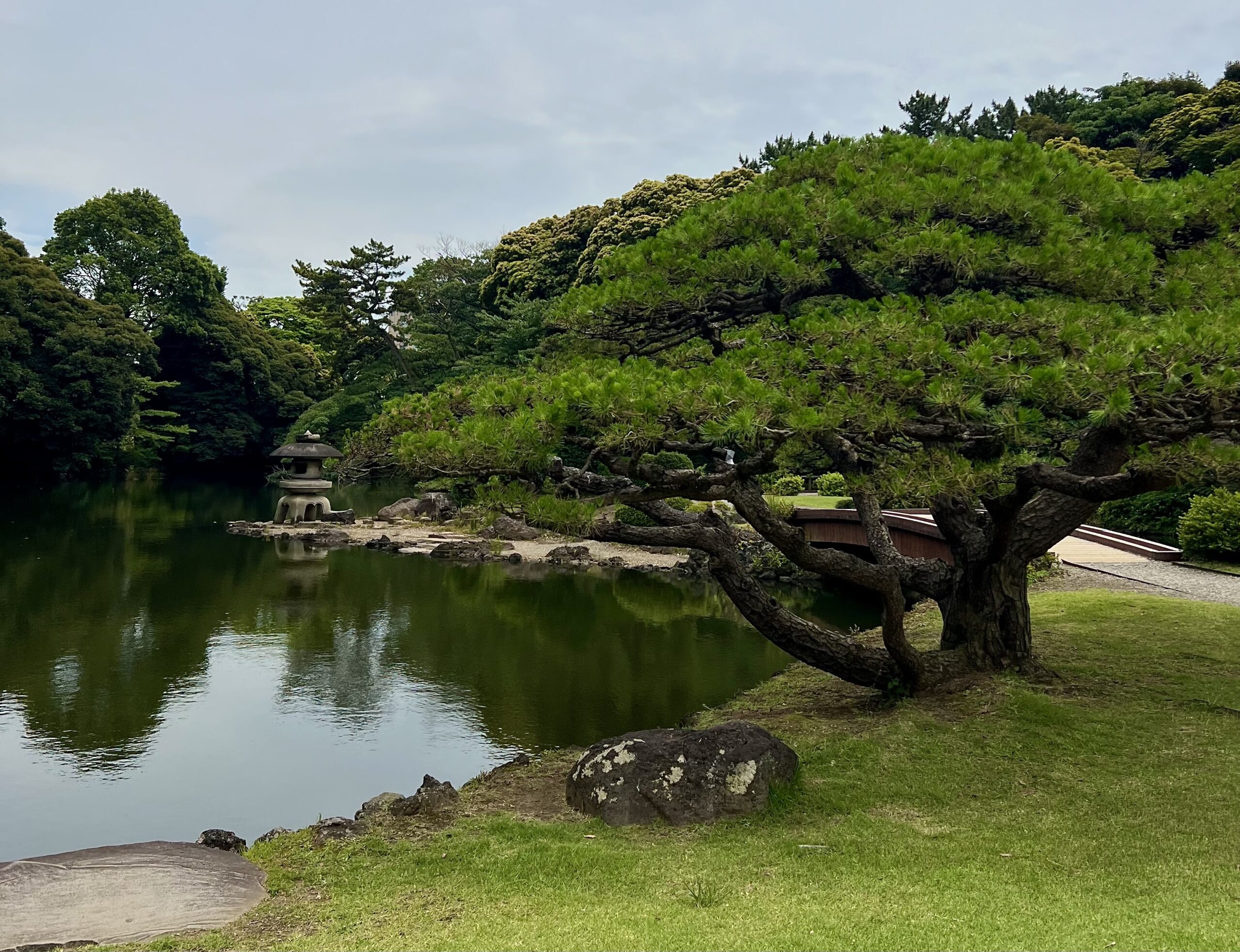
Large bonsai tree next to a pond at Shinjuku Gyoen National Garden
First-time visitors of Tokyo will quickly notice the contrast that now exists around them. Something that makes Tokyo different from most big cities is the presence of natural landscapes amongst the looming towers and bustling city life.
Massive skyscrapers are seen right next to ancient temples, shrines, forests and gardens. Japan’s intentions on maintaining the natural lands it was built upon makes this city quite contrasting.
Historical sites throughout Japan offer a gleaming insight into what the country was like at the time and each one tells a beautiful story, especially those restored after the catastrophes brought by major wars and severe natural disaster. Tourists are drawn to these sites because of the rich history and beautiful, green nature.
In 1911, a petition was created to preserve national parks in Japan and was submitted to the National Diet, the national legislature in Japan. In 1931, a lawmakers passed the National Parks Law and between 1934 and 1936, twelve national parks were established.
After World War II, Japan began restoring their natural parks due to the tourism that these parks attract and how this would help their weakened economy. Over the years as Japan’s economy has strengthened, so has the emphasis on preserving nature for revenue from tourism.
Shinjuku Gyoen National Garden is one of Tokyo’s largest parks and is managed by the Japanese Ministry of Environment. In 1590, the land was gifted to Naito Kiyonari to be protected by the Tokugawa shogunate (military government).
Later, it changed from an agricultural center to a botanical garden and in 1898, Fukaba Hayato was the force in action to convert it to an imperial park. He spent 40 years working on Shinjuku Gyoen, and he was recognized globally for his work.
In 1945, Shinjuku Gyoen was destroyed by airstrike during World War ll and after the war ended, it was used as farmland for the famine. By 1947, it became a national park under the new Japanese constitution to be protected and preserved for generations to come.
In the heart of Tokyo, Shinjuku Gyoen houses over 20,000 tropical trees and 1,500 tropical plants. Visitors can walk the entire space, measuring at 144 acres of beautiful gardens and fields. Shinjuku Gyoen also offers a museum, a luscious greenhouse filled with a wide array of colorful and rare plants, the Old Imperial Rest House which housed the Imperial family and was built in 1896, a tea house, rest house, and multiple small cafes and shops.
Thousands of visitors flock to Japan during cherry blossom season (from March to late April), and Shinjuku Gyoen has more than 400 of these trees. Another popular time for the garden is autumn (mid November to mid December), when the leaves change colors. Momijiyama is deemed the “maple mountain” and explodes into color during these months. It is closed on Mondays except during cherry blossom season and the Chrysanthemum Exhibition in November. The admission costs 500 yen.
Shinto shrines and Buddhist temples are considered sacred areas, therefore the shrine and temple themselves and the areas around them are heavily protected. Visitors will notice the different architectural styles between each shrine, which showcases the time period they were built in. As the world around them has progressed into more futuristic style buildings, these shrines are like a glimpse back in time.
Many shrines and temples take part in recurring re-buildings (referred to as sengū) to preserve their unique architectures. During this, the deity is moved to a temporary shrine or temple and once finished, it is returned to the original. Although these reconstructions are done out of necessity, there is also a spiritual renewal of power for the deity that comes with sengū.
The Great Buddha of Kamakura, otherwise known as a Daibutsu, is the second tallest bronze Buddha statue in Japan at a staggering 11.4 meters. It was originally housed in a temple building, which was repeatedly destroyed by tsunamis and earthquakes. Since then, Daibutsu has remained exposed to the elements. Restorations by Kotoko-in Temple have been put in place to preserve it.
Visitors from all over the world come to see Daibutsu, and many are amazed by its impressive size. Being only five minutes away from the train station, it is shocking to see such a large and significant site. Buddhists will feel a personal affiliation with it, however it is a breath-taking sight to see regardless of one’s religious affiliation. The grounds surrounding the Buddha contain small green gardens with scriptures on stones and small temples.
The admission to the Great Buddha is 300 yen, and for an additional 50 yen you can go inside of the statue itself. It’s open from 8:00 a.m. to 5:30 p.m. (from October to March, it closes at 5 p.m.), and there are no days when it is closed. Due to its popularity, this site can be quite crowded.
Hasedera Temple is another example of a beautiful scenic site inserted into the seaside town of Kamakura. Visitors can even see the ocean from a specific spot at the temple while enjoying dango. Deemed the hydrangea temple, one of Hasedera’s main attractions is the stunning 2,500 hydrangea flowers. The best time to see them is from early June to early July. Arrive early in the morning, however, because wait times to see the famous hydrangea path can be up to three hours!
Hasedera is built along the slope of a hill, with the temple entrance being at the base. Upon entering, one will be greeted with glimmering ponds containing koi fish and a lush garden. The entirety of the temple is serenely green, with moss covering the ground and stones surrounding the paths, trees, and blooming flowers. A small creek flows from the top of the hill and down into the ponds. There is also a museum.
Those who want to visit Hasadera can visit from 8 a.m. to 5 p.m. (from April to June until 5:30 p.m.), and admission ends 30 minutes before closing. However, the museum onsite has differing hours. The admission to the temple is 400 yen and admission to the museum is an additional 300.
When in Japan, the greenery that surrounds you is noticeable and allows the massive city to feel breathable while bringing life to the environment. Japanese culture emphasizes the importance of nature which is showcased in the many laws put into place to preserve this. Their appreciation for the history that has brought this country to where it is today has given its people and anyone who visits Japan a truly remarkable experience.







